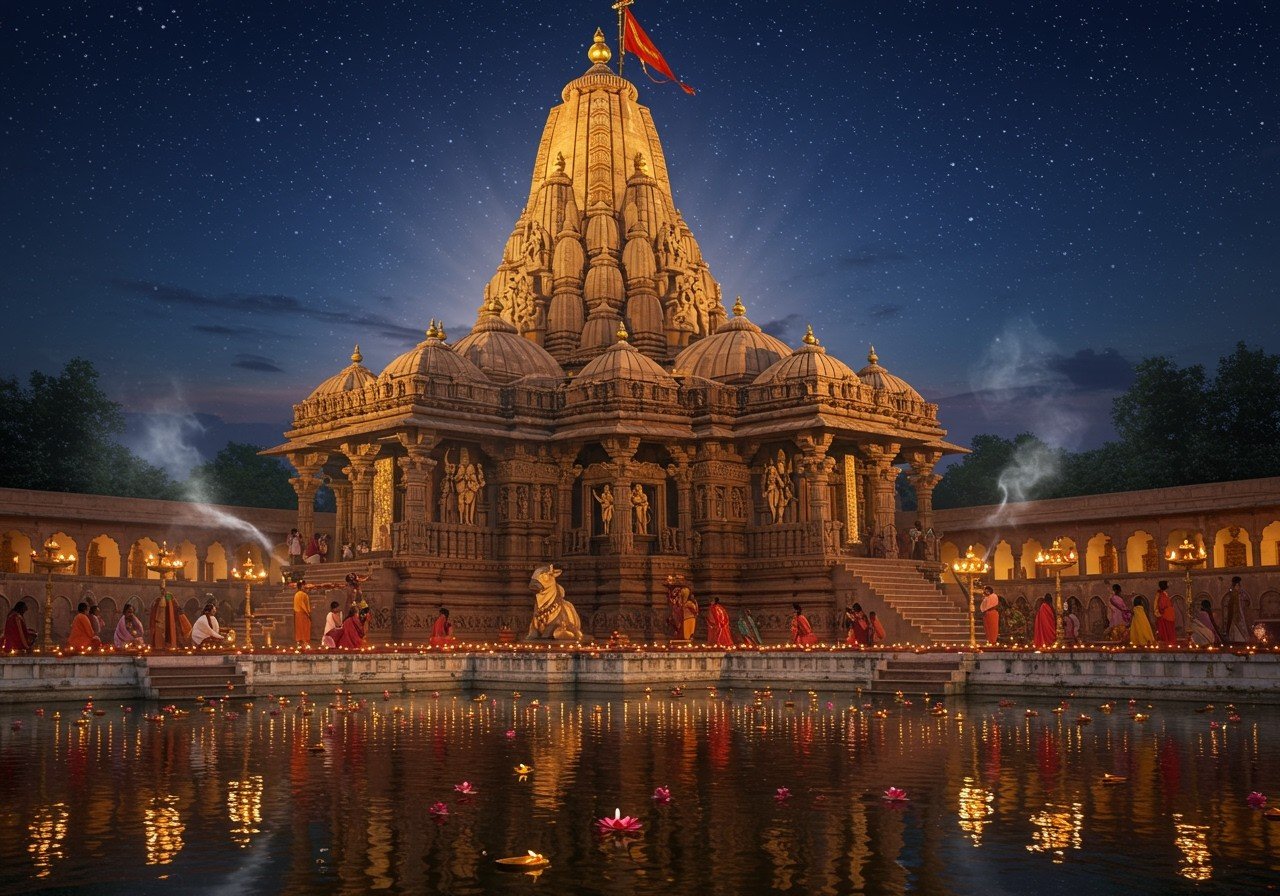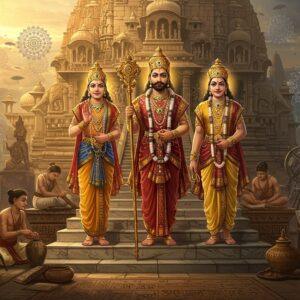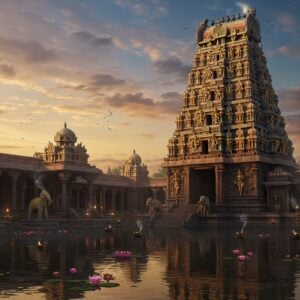
Tucked away in the heart of Karnataka lies a place where history isn’t just in books; it breathes in the air, stands tall in ancient stones, and lives on in the vibrant traditions of its people. This is Sandur State, a former princely state whose story is as captivating as the land itself. For those of us who cherish our roots and find solace in our culture, the tale of Sandur is a beautiful reminder of a regal past that continues to shape a dynamic present. Let’s take a journey together into this treasure trove of history and tradition, exploring its legacy in 2025.

The Storied Past of a Maratha Dynasty in the Deccan
The story of Sandur begins around 1713 with a valiant Maratha chieftain, Shrimant Sidalji Ghorpade. The Ghorpade dynasty carved out this kingdom, and their very name holds a legend. It is said an ancestor scaled the formidable walls of Khela fort using a rope tied to a monitor lizard—a ‘ghorpad’ in Marathi—a testament to their courage and ingenuity. This spirit defined their rule for centuries.
Thanks to its strategic location and rich iron ore mines, Sandur was always a place of significance in the Deccan Plateau. It navigated the complex political landscape, eventually becoming a British protectorate in 1818. The final chapter of its princely status was written on August 10, 1947, when Raja Yeshwantrao Ghorpade, with foresight, signed the Instrument of Accession, merging Sandur with the newly independent India. By 1953, it officially became an integral part of Karnataka, starting a new chapter in its long and glorious history.
A Legacy of Progress and Cultural Harmony
What truly sets Sandur apart is not just its royal history, but the progressive ideals of its rulers. The Ghorpades were more than just kings; they were patrons of art, champions of education, and visionaries of social reform. They fostered a beautiful blend of Maratha and local Dravidian traditions, creating a unique cultural fabric that is still vibrant today.
In an era when society was deeply divided, the rulers of Sandur opened the doors of temples to all castes and boldly outlawed the practice of untouchability. They established schools to ensure education was not a privilege but a right for everyone. This forward-thinking mindset is a cornerstone of Sandur’s heritage.
The Intricate Beauty of Lambani Craftsmanship
You cannot speak of Sandur’s culture without mentioning the incredible Lambani community. Their embroidery is a dazzling spectacle of colours, mirrors, and intricate stitches that tell stories on fabric. This living art form is a testament to the region’s rich artistic soul and the skilled hands that keep this tradition alive.
Spiritual Sanctuaries and Architectural Grandeur
The land of Sandur is dotted with spiritual landmarks and architectural wonders that transport you to another time. The ancient Kumaraswamy Temple is one such sacred space, a centre of faith for generations. In a revolutionary move in the 1930s, the Ghorpade rulers opened this temple to the Harijans, reinforcing their commitment to equality and devotion for all.
Another jewel is the magnificent Shivavilas Palace. Built around 1940, its architecture is a splendid fusion of Indian and Western styles. Today, it stands proudly as a heritage hotel and museum, allowing visitors to experience the grandeur of a bygone era firsthand. Just as a palace needs its deity, every home puja room can be graced with divinity. Consider bringing home a beautiful Crystal Shivling Idol from Poojn.in to create your own sacred sanctuary.

Sandur Today: Honouring the Past, Embracing the Future
In 2025, Sandur continues to be a place of balance. It carefully manages its valuable mining industry while nurturing eco-tourism and conservation efforts. It understands that progress and preservation must go hand in hand. The legacy of the Ghorpades is not just a memory; it is a living principle guiding Sandur towards a sustainable and culturally rich future.
This commitment to heritage is something we at Poojn.in deeply understand. Our mission is to provide you with authentic, high-quality items that honour our traditions. For your daily rituals that connect you to our shared heritage, our long-lasting Ghee Diyas offer convenience without compromising on sanctity.
Your Questions on Sandur’s Rich Heritage Answered
Many of you might be curious about this incredible place. Let’s explore some common thoughts.
What is the real historical importance of Sandur State?
Sandur State holds immense historical significance as a princely state that was a hub of Maratha culture in the Deccan. Its rulers were not only politically important but also social reformers whose progressive policies in education and caste equality were far ahead of their time, leaving a lasting impact on the region.
Why is Sandur considered a major cultural heritage destination?
It is celebrated as a cultural heritage site because of its breathtaking mix of royal palaces, ancient temples like the Kumaraswamy Temple, and the living traditions of its people, especially the vibrant Lambani embroidery. Its architecture and cultural practices offer a direct window into a rich and diverse past.
If one plans a visit in 2025, what can they experience?
A journey to Sandur in 2025 promises a truly immersive experience. You can explore its historic landmarks, witness colourful local festivals, and engage with the living traditions that have been passed down through generations. It’s a chance to step away from the noise and connect with the soul of our land.
How did Sandur State influence the history of its region?
Sandur played a key role through its strategic position and the wisdom of its rulers. They formed crucial alliances and were patrons of art and culture, which enriched the entire region. Their progressive social reforms set a powerful example of equality and inclusivity.
What makes Sandur different from other historical sites in India?
The uniqueness of Sandur lies in its serene, untouched feel combined with a powerful, progressive history. It’s not just a collection of monuments; it’s a living community where a legacy of social harmony, artistic expression, and respect for nature continues to thrive, offering a truly holistic heritage experience.


